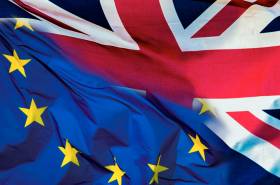Displaying items by tag: EBA
'Nautical Tourism' is New Focus for ICOMIA & European Boating Industry in Partnership to Develop Global Boating Industry
European Boating Industry (EBI) and ICOMIA have entered a new partnership with mutual benefits for both EBI and ICOMIA members and an increased focus on the further development of nautical tourism.
European Boating Industry (EBI) represents the European recreational boating industry. It encompasses all sectors relating to boating such as boatbuilding, equipment manufacturing, marinas, charter companies, and service providers. EBI is an established stakeholder at EU level, promoting the interests of its members through day-to-day advocacy on key issues ranging from the Recreational Craft Directive, Blue Economy, the European Green Deal, Research and Innovation, and fiscal framework, to qualifications, tourism, and trade policy. It is in constant exchange with the European Commission, European Parliament, Council, and stakeholders to bring across the key messages of the industry.
ICOMIA is an international association, whose full members are global marine industry associations. ICOMIA is a longstanding stakeholder in the various relevant working groups of the European Commission and employs technical and environmental specialists who are engaged in EU-related work. Its mission is to act as the voice of the recreational marine industry worldwide to facilitate, influence, inform and research.
Through this agreement, ICOMIA will continue to provide technical and environmental support and ensure cohesive representation of and communication with EBI and ICOMIA members. ICOMIA will assist with statistical work or studies, including the annual ICOMIA Statistics Book.
As part of this new partnership, EBI will start providing bi-monthly monitoring newsletters, which will include updates on EU work and EBI’s advocacy activities to keep its global partner updated.
The agreement was signed by the Presidents of the two associations, Sara Anghel and Jean-Pierre Goudant, as well as their respective Secretary-Generals, Udo Kleinitz and Philip Easthill.
Udo Kleinitz, Secretary-General of ICOMIA, said: “EBI and ICOMIA have a high overlap in their European membership. From the outset we have been working on complementing each other’s work rather than duplicating. This agreement is a step to implement better exchange of information and joint action. I believe I can speak for ICOMIA and its members in saying we are very pleased about the public message it sends in demonstrating our stronger ties.”
Philip Easthill, Secretary-General of EBI, said: “We are delighted to have signed the renewed and extended partnership agreement with ICOMIA. It allows for optimal communication channels and cooperation between the work of EBI at EU level and ICOMIA’s global activities. We have agreed a partnership that supports both associations’ members and the entire recreational boating industry to create suitable regulatory conditions.”
European Boating Association In Advisory For EU Boats In UK Waters In Event Of No-Deal Brexit
#Brexit - The European Boating Association (EBA) has urged its members to beware of the possible financial implications of having an EU boat in UK waters in the event of a no-deal Brexit.
In a circular to members, EBA general secretary Stuart Carruthers reiterates advice given at the association’s recent General Assembly in Helsinki, as received from the European Commission.
“In the event of a ‘no deal’ Brexit, boats which are lying in the UK at the time of Brexit will lose their Union status (ie they will lose their right to free circulation in the EU),” he writes.
“On their return to the EU they will be treated as non-Union goods and will be subject to customs controls in the same way as any other vessel coming from a third country would be. This could result in VAT and, if applicable, import duty being payable.”































































